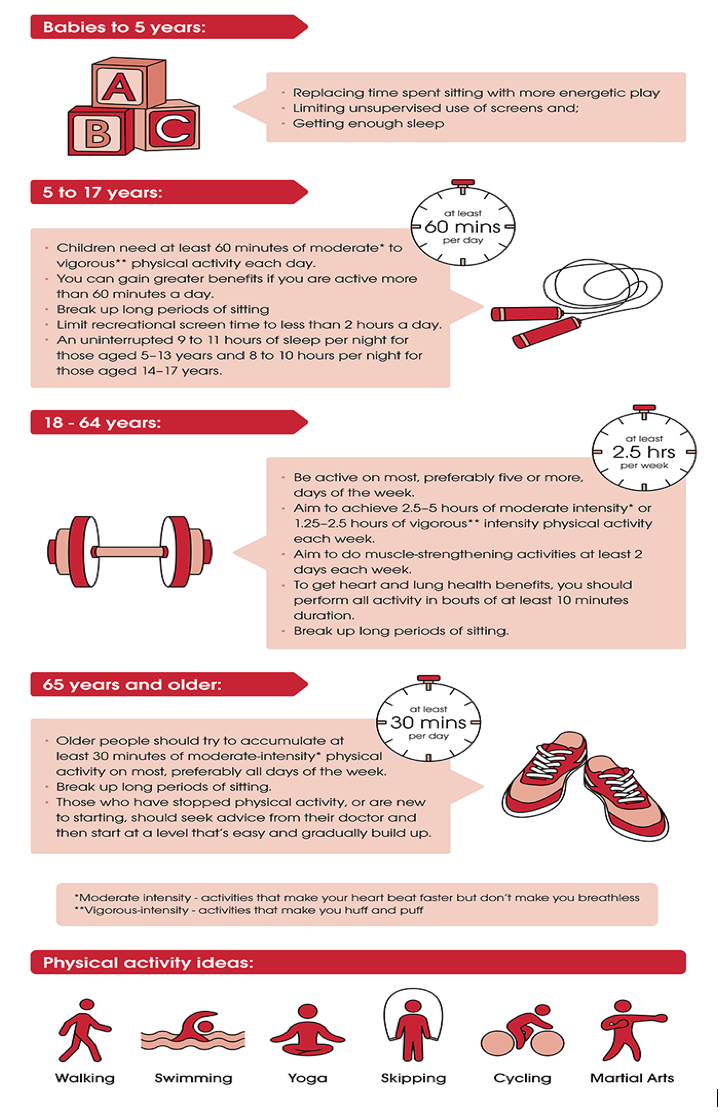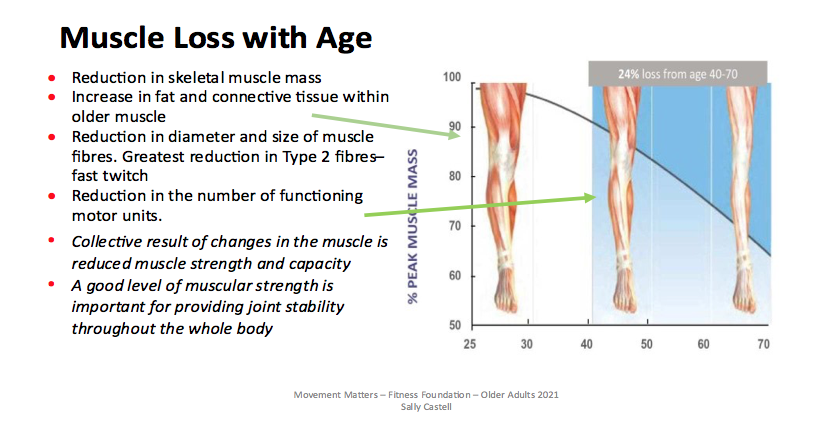Movement Matters – Move More, Move Often
As you know you can increase your daily physical activity without joining a gym or even breaking a sweat. The good news is you can simply do more of the activities you enjoy every day, like walking. By simply moving more during the day we can reduce the risk of heart disease by 54% by simply gaining enough fitness to move from poor levels of fitness (bottom 20%) to average fitness levels. For every 1 MET increase in cardiorespiratory fitness there is a 15% decrease in all – cause mortality.
What exactly is ‘physical activity’?
- Physical activity– Daily actions, such as walking to the shops, taking the stairs, getting off public transport and walking to your destination.
- Exercise– Organised activities and sports, such as swimming, cycling, yoga and walking groups (e.g. Heart Foundation Walking Program).
Fitness components – exercise
- A general exercise program should contain the three major components and each one needs to be considered and included for a “well rounded” program. These being;
- a) Stamina (aerobic fitness) b) Strength c) Suppleness (flexibility) and an additional balance component
- When planning an exercise program, the following four elements also are important and need consideration. These being: Frequency ; Intensity ;Time ; Type
How much physical activity do you need?
One program does not and should not suit all. There are multiple exercise recommendations, many different exercise training programs and styles have been developed (mainly from research) focusing on different elements and issues for different target groups but as always … age matters less… it is what you can do, needs to do and wants to do that counts! There are many different guidelines that you can access from various organisations dependent on your condition or need such as the Heart Foundation (see below) and Arthritis Australia
Stamina – Building activity into your day –heart health
Building physical activity into your everyday life doesn’t have to be difficult. You can set aside a specific time each day or fit some exercises in while waiting for the kettle to boil or watching TV.
- Being physically active includes everyday movements (e.g. walking) and exercise.
- Regular physical activity has many benefits for your health, both now and in the future.
- Simply doing activities you enjoy is a great way to start on the path to better heart health.
- As little as 10 minutes of physical activity a day can be good for your health.
You can increase your physical activity at any age and just about any level of fitness.

Strength
As mentioned previously strength is very important to help maintain good functional abilities.
Below is some information concerning muscle loss as we age.

Research has reported that older adults can make significant gains in muscular strength and walking speed through resistance / strength training, but by adding balance and gait training this can significantly improve some balance and gait measures beyond improvements made purely from strength training alone, thereby greatly reducing the risk of sustaining a fall
There are lots of exercises you can incorporate into your day for leg strength and balance for example : Stand up and sit down ; Half squats ; Heal lifts etc.
As I have just recently had my hip replacement, I thought it would be appropriate timing to include hip exercises in the first newsletter. The 2 attachments involve keeping the area mobile and strong …..one in standing and the other in lying ( choose which one suits you or do both!)
Just remember “Movement Really Matters”
“Exercise in later life maintains and manages meaningful movement to postpone, protect, preserve and prevent unforeseeable declines in physical and mental functional abilities”
Take care – Stay Safe ..and Keep Moving . – Sally

Comments are closed.